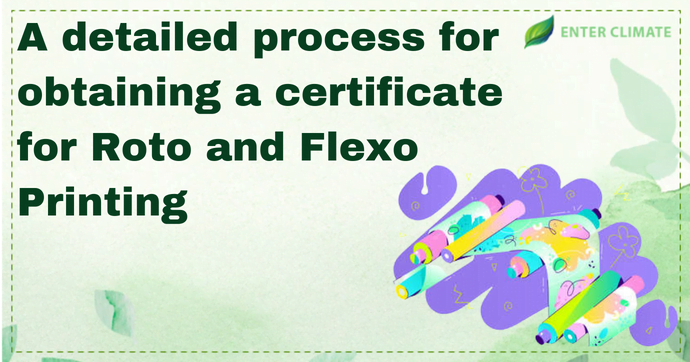Overview of Biodegradable Plastic Pellets Manufacturing Business
 29 Jun, 2023
29 Jun, 2023 
Biodegradable Plastic Pellets include plastics that can be broken down by living organisms, typically microbes, into water, carbon dioxide, and biomass. These plastics are often made using renewable raw materials, microorganisms, petrochemicals, or a combination. Biodegradable plastics are designed to degrade more quickly than regular plastics because they contain additives that attract microbes to aid in their decomposition. Bioplastic materials are derived from renewable sources like vegetable fats and oils, corn starch, straw, woodchips, sawdust, and recycled food waste. By offering environmentally friendly alternatives to conventional plastics, biodegradable plastic pellet manufacturing businesses can differentiate themselves and gain a competitive advantage. This allows them to command higher product prices, resulting in increased profitability.
Uses of Biodegradable Plastic Pellets
There are two kinds of bio-based polyesters involved in the Biodegradable Plastic Pellets Manufacturing Business:
- polylactide acid (PLA)
- polyhydroxyalkanoate (PHA)
The uses of Biodegradable Plastic Pellets in Biodegradable Plastic Pellets Manufacturing Business are as follows:
- Biodegradable plastics contribute to the reduction of carbon dioxide levels.
- Naturally occurring bacteria break down biodegradable plastics, resulting in decreased greenhouse gas emissions.
- Biodegradable plastics do not release other hazardous substances when they decompose.
- The manufacturing process of biodegradable plastics consumes less energy.
- Biodegradable plastics help reduce the amount of waste generated.
- Biodegradable plastics redirect petroleum consumption to other purposes.
- Biodegradable plastics can be combined with traditional products.
- The manufacturing cycle of biodegradable plastics requires less energy.
- Biodegradable plastics have the potential to create new export industries.
- Biodegradable plastics provide a new marketing platform.
- Under specific circumstances, biodegradable plastics can decompose rapidly.
Factors for the Growth of the Bioplastics Market in India
The global bioplastics market is experiencing significant growth, and several factors contribute to this growth. They include:
- Mandates and regulations: Government policies and regulations drive the adoption of bioplastics, promoting their use and setting targets for sustainable materials.
- Increasing eco-awareness among consumers: Consumers are becoming more conscious of the environmental impact of plastic waste and are actively seeking sustainable alternatives, including bioplastics.
- Corporate focus on sustainability: Companies are recognizing sustainability’s importance and integrating it into their business strategies. This shift in corporate mindset is driving the demand for bioplastics.
- Technology stabilization: Advancements in technology have led to the stabilization of bioplastic manufacturing processes, making them more viable and commercially feasible.
- Cost reduction: As bioplastic production processes improve and economies of scale are achieved, the cost of bioplastics is decreasing, making them more competitive with traditional plastics.
The global market is transitioning towards a low-carbon and circular economy, supported by policy measures and increased consumer awareness of sustainable products and packaging. This creates significant growth opportunities for biodegradable plastics manufacturers in the coming years. The demand for biodegradable plastics is rising in packaging, agriculture, and textiles.
With growing concerns about the environmental impact of plastics, there is a rising demand for Biodegradable Plastic Pellets Manufacturing Business. Biopolymers and bioplastics are considered viable and scalable alternatives to many plastics. They offer exciting opportunities in various sectors, including packaging, water, beverages, insulation materials, speciality materials, and more.
How to start a Biodegradable Plastic Pellets Manufacturing Business
Biodegradable plastic is an excellent alternative to conventional plastics, which are inexpensive and easy to produce but difficult to decompose. Consequently, biodegradable plastic products are being widely used as a replacement for harmful plastic products. These products are made from biodegradable plastics derived from biopolymers extracted from decomposed plants and animals.
Manufacturing Process: Generally, biodegradable plastics are manufactured using plant-based polymers, mainly starch. Alternatively, they can be made from a biopolymer called Chitin, extracted from insect skins, shellfish shells, and fungal cell walls. Once a sufficient quantity of these renewable raw materials is collected, they are processed and moulded to form biodegradable plastic products. Pro-oxidant additives are also incorporated into these plastics to facilitate quick decomposition, leaving natural and non-toxic end products behind.
Biodegradable pellets are produced using corn kernels. These kernels are collected and processed in a mill to extract dextrose from the starch. The dextrose is then converted into lactic acid or lactate through fermentation. The lactate is further polymerized to form long-chain polylactic molecules. Hydrophobic agents and emulsifiers are added to the polylactate, and the mixture is blended at a specific temperature, resulting in an extrudate that is transformed into pellets.
Process, approvals and Licenses required for Biodegradable Plastic Pellets Manufacturing Business
To obtain a CPCB (Central Pollution Control Board)[1] certificate for bioplastic manufacturers, a standard operating process (SOP) is followed. The SOP applies to all applications and involves several steps:
- Filing of Application: Manufacturers of bioplastics submit a registration application (Form A) along with the necessary documents, which should be digitally signed. The application is sent to the CPCB via email. Upon receiving the application, the CPCB assigns an application number and sends a conformity mail to the applicant. Additionally, an undertaking to register bioplastic carry bags on duly notarized stamp paper is required.
- Processing of Application: The CPCB examines the application and communicates any queries to the applicant within seven working days. The applicant must respond to the queries within thirty days. Respond within the given timeframe to avoid rejection of the application. The certificate is generated if the CPCB does not respond within one month.
- Issuing of Certificate: According to the Plastic Waste Management Rules, 2016, the CPCB must issue the certificate within seven working days from the submission of the application. A copy of the certificate is sent to the respective State Pollution Control Board or Pollution Control Committee. In certain cases, a provisional certificate may be issued initially, and a final certificate is granted after submitting a complete test report or other specified conditions.
- Cancellation of Certificate: The CPCB may cancel or suspend the certificate if the manufacturer fails to comply with the conditions. If any violations are found during checking or verification, a notice is issued, providing the manufacturer with an opportunity to respond within fifteen days. The final decision on cancellation or suspension lies with the chairman of the CPCB.
Licences required
- Business Registration
- GST registration
- Pollution NOC from SPCB
- Extended Producer Responsibility (EPR) registration
- MSME registration
- Registration with the State Pollution Control Board
- Manufacturing Certificate issued by the Central Pollution Control Board (CPCB)
- Factory’s Licence
- Fire NOC
Documents Required
The documents required to obtain a CPCB license in Biodegradable Plastic Pellets Manufacturing Business are as follows:
- Production details, including compostable plastics manufacturing capacity, end products, and byproducts.
- Manufacturing process flow diagram
- Test report of biodegradability from CPCB certified Lab
- Documents showing raw material procurement and product sale
- Details of pollution control measures
- Undertaking letter
Market Overview of Biodegradable Plastic Pellets Manufacturing Business
The global market for Biodegradable Plastic Pellets Manufacturing Business was valued at over $4 billion in 2017 and is projected to reach $15.6 billion by the end of 2027, exhibiting a strong compound annual growth rate (CAGR) of 14.4% during the period from 2017 to 2027. This growth is primarily attributed to the rising costs of petroleum-based resins and increasing initiatives favouring renewable resources. Among the different types of bioplastics, polyester-based and polylactic acid resins are expected to experience the fastest growth, while starch-based varieties will remain the largest segment.
India’s biodegradable plastic pellets and products market is also witnessing significant growth in response to the increasing environmental consciousness among Indian consumers. The Indian biodegradable plastic market is actively adopting new technologies, leading to the expansion of manufacturing biodegradable plastics and products. It is projected that biodegradable plastics will capture 60% of the plastic industry in India.
Conclusion
Manufacturing biodegradable plastic pellets presents a promising business opportunity in today’s environmentally conscious market. Biodegradable plastics offer a sustainable alternative to conventional plastics, addressing pollution and plastic waste accumulation concerns. By utilizing renewable raw materials and employing advanced manufacturing processes, biodegradable plastic pellets can be produced with reduced environmental impact. Setting up a biodegradable plastic pellets manufacturing business requires careful planning and adherence to relevant regulations and standards. Obtaining certifications from authorities like the CPCB can enhance credibility and market reach. It is recommended to take expert advice to set up Biodegradable Plastic Pellets Manufacturing Business to comply with the necessary regulations and obtain the specific licenses applicable to your business.
FAQ
Due to the adverse effects of plastic waste biodegradable plastic bag business has become one of the most profitable manufacturing businesses in the present and the upcoming time.
Biodegradable Plastic costs 20 – 50% more thantraditional plastic.
The Global Biodegradable Plastic market worth in 2021 was USD 4.345 Billion and will reach USD 12.915 Billion by 2030, at a CAGR of 13.1%.
For starting, approximately 60 lakhs rupees is required in a biodegradable plastic bag manufacturing business on a small scale.
Yes, it costs 20 – 50% more to produce bioplastic than to produce traditional plastic.
Biodegradable plastics are formed by fermenting sugar/canola oil to produce Polylactic acid (PLA) or Polyhydroxyalkanoates (PHA), converted into biodegradable plastics.
Corn, Cassava, Potato, and Sugarcane are the raw materials for biodegradable plastic.
Biodegradable plastic granules are made from the starch found in corn kernels, which is then broken down into sugars.
Biodegradable plastic bags can be made from a normal plastic polymer or polypropylene by incorporating an additive which causes degradation and then biodegradation of the polymer due to oxidation.
Biodegradable plastics are formed from the fermentation of sugar or canola oil to produce Polylactic acid (PLA) or Polyhydroxyalkanoates (PHA), which are converted into biodegradable plastics.
Read our Article: How To Start A Biodegradable Plastic Bag Business?
Categories
Latest Post
Air pollution Dispersion Modeling
Natural Disaster Risk Assessment
Endangered Species Protection
Aquifer Recharge Project
Sustainable Sanitation Solutions














